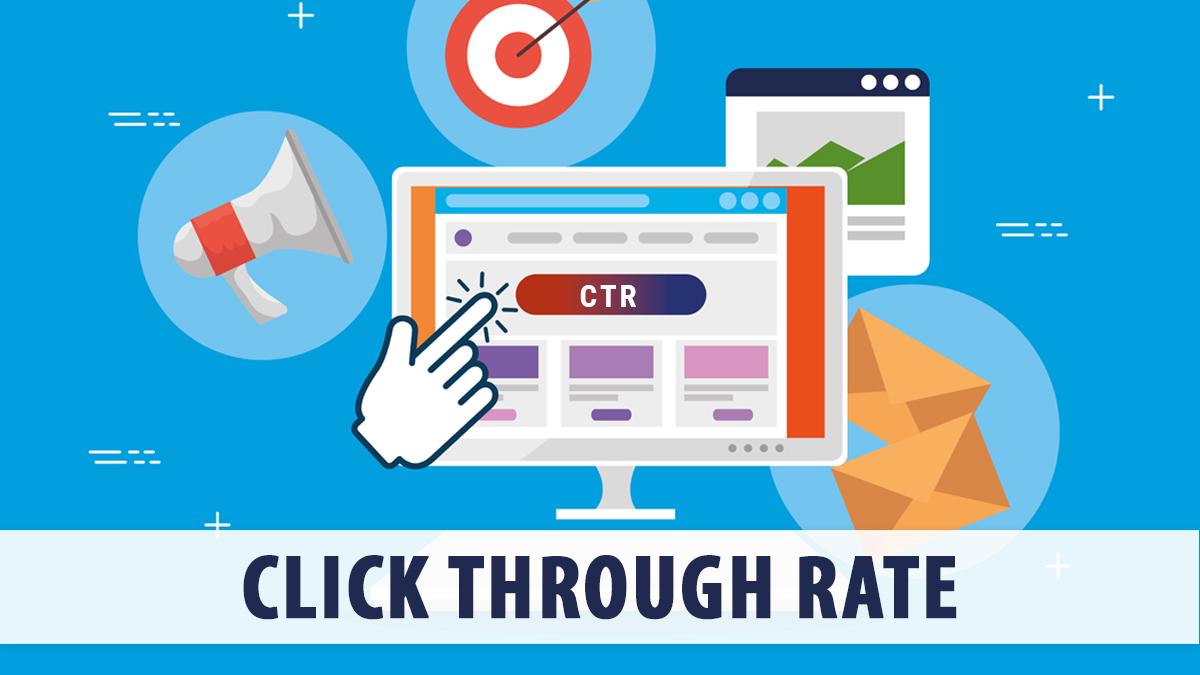Ready to monetize your blog? Adding Amazon affiliate links to WordPress is a breeze! In this beginner-friendly guide, we’ll walk you through the simple steps to start earning commissions while sharing products you love. Let’s dive in!
How to Add Amazon Affiliate Links to WordPress? (Beginner’s Guide)
Are you ready to turn your passion for blogging into a potential income stream? If you’ve ever dreamed of earning money while sharing your favorite products and recommendations online, you’re in the right place! In this beginner’s guide, we’re diving into the world of Amazon Affiliate Links and how you can effortlessly add them to your WordPress site. Whether you’re a seasoned blogger or just starting out, incorporating affiliate links can elevate your content and help you monetize your efforts. Imagine earning commissions on products you love, all while providing value to your readers! Don’t worry if you’re not tech-savvy; we’ll walk you through each step in a friendly, easy-to-understand way. So, grab a cup of coffee, and let’s get started on your journey to becoming an affiliate marketing pro!
Understanding the Amazon Affiliate Program and Its Benefits
The Amazon Affiliate Program, also known as Amazon Associates, is a powerful tool for anyone looking to monetize their website or blog. By joining this program, you gain access to a vast selection of products across various categories that you can promote on your site. Every time someone makes a purchase through your unique affiliate link, you earn a commission. This not only gives you a chance to generate passive income, but it also allows you to provide value to your audience by recommending products they may find useful.
One of the primary benefits of the Amazon Affiliate Program is the trust factor associated with the Amazon brand. Consumers are more likely to purchase products from a reputable source, and Amazon’s established reputation can help increase your conversion rates. Additionally, Amazon offers a wide range of products, from electronics and home goods to books and clothing. This diversity allows you to cater to various niches and audiences, making it easier to fit affiliate marketing into your content strategy.
Another significant advantage is the ease of use. Setting up your Amazon Affiliate account is straightforward. You can quickly generate affiliate links for any product, which can be easily added to your WordPress site. Moreover, Amazon provides a variety of tools and resources, including widgets and banners, to help you promote products effectively. With just a few clicks, you can enhance your website’s earning potential without any complicated processes.
When considering the profitability of the Amazon Affiliate Program, it’s essential to note the commission structure. Depending on the product category, commissions can range from 1% to 10% or more. Here’s a quick look at some common categories and their commission rates:
| Product Category | Commission Rate |
|---|---|
| Books | 4% |
| Electronics | 4% |
| Home & Kitchen | 8% |
| Fashion | 10% |
In addition to these benefits, tracking your performance is a breeze with Amazon’s built-in analytics tools. You can monitor clicks, conversions, and overall earnings in real-time, allowing for data-driven decisions to optimize your marketing efforts. This feature makes it easy to identify which products resonate with your audience and adjust your strategy accordingly.
being a part of the Amazon Affiliate Program means you’re joining a community of like-minded individuals. There are numerous forums, blogs, and resources where you can learn from others, share experiences, and gather tips to improve your affiliate marketing game. By leveraging this support network, you can enhance your knowledge and ultimately increase your revenue stream.
Setting Up Your Amazon Affiliate Account Made Easy
Setting up your Amazon Affiliate account is the first step toward monetizing your WordPress site. The process is straightforward, and with just a few clicks, you can join one of the most popular affiliate programs available. Let’s break down the steps you need to take.
First, head over to the Amazon Affiliate Program page. Here, you’ll want to click on the “Join Now for Free” button. You’ll be guided through the process of creating your account if you don’t have one already. Make sure to provide accurate information about your website, social media pages, or mobile apps that will feature Amazon products. This information is crucial as it’s how Amazon evaluates your application.
Once you’ve registered, you’ll need to fill out your profile. This includes your payment information and how you intend to promote Amazon products. Be honest and clear about your promotional methods. Amazon likes affiliates who use their links genuinely and ethically, so consider mentioning:
- Your blog’s niche
- The target audience you reach
- How frequently you plan to post content
After your profile is complete and your application is submitted, it’s time to generate your affiliate links. In your Amazon Affiliate Dashboard, navigate to the “Product Linking” section. Here, you can search for products relevant to your niche. Once you find what you’re looking for, select the product and click on the “Get Link” button. You’ll have options to customize your link, such as choosing between text links, image links, or even a combination of both to suit your website’s design.
| Link Type | Description | Use Case |
|---|---|---|
| Text Link | Simple hyperlink to a product. | Best for blogs with prose-heavy content. |
| Image Link | A clickable image that links to the product. | Ideal for visual-centric posts. |
| Text + Image | A combination of both text and image. | Great for detailed product reviews. |
Copy the generated HTML code and head over to your WordPress editor. If you’re using the block editor, add a Custom HTML block or use the Classic Editor and paste the code directly where you want the link to appear. Preview your post to ensure everything looks good, and don’t forget to check that your links are working correctly!
start creating content that resonates with your audience while weaving in your affiliate links. Focus on providing value through honest reviews and recommendations, ensuring your links are relevant to the content. This can enhance your credibility and increase your chances of earning commissions.
Choosing the Right Products to Promote on Your WordPress Site
When selecting products to promote on your WordPress site, it’s essential to align your choices with the interests of your audience. Not only does this increase the chances of conversions, but it also builds trust with your readers. Here are a few key factors to consider:
- Relevance: Choose products that resonate with the theme of your site. If you’re running a tech blog, promoting the latest gadgets or software makes more sense than kitchen appliances.
- Quality: Prioritize high-quality products. You want to ensure that your recommendations reflect positively on you and your brand. Look for best-sellers or items with excellent reviews.
- Commission Rates: Not all products are created equal when it comes to affiliate commissions. Research the commission structures of different categories and opt for those that offer higher payouts.
- Seasonality: Consider the time of year. Some products may perform better during holidays or special events. Planning your promotions around these times can yield better results.
In addition to understanding your audience and the products they prefer, it’s also wise to evaluate how well those products perform within the Amazon marketplace. Here’s a quick comparison table to help you gauge product popularity:
| Product Category | Average Rating | Estimated Monthly Sales | Commission Rate |
|---|---|---|---|
| Electronics | 4.5 | 15,000 | 4% |
| Books | 4.7 | 12,000 | 6% |
| Clothing | 4.2 | 8,000 | 10% |
| Home & Kitchen | 4.3 | 10,000 | 5% |
Another vital aspect is to leverage your personal experiences with the products. Sharing your genuine thoughts can significantly influence your readers’ decision-making process. Whether you post a review, an unboxing video, or a simple testimonial, make sure your content is authentic and relatable.
Lastly, keep an eye on trends. Regularly researching new products and monitoring your analytics can provide insights into what your audience is responding to. This fluid approach will help ensure that you’re always promoting the most appealing products, maximizing your earning potential through Amazon’s affiliate program.

Installing Essential Plugins for Seamless Affiliate Linking
To effectively integrate Amazon affiliate links into your WordPress site, selecting the right plugins is crucial. These tools not only streamline the process of adding links but also enhance your site’s functionality and user experience. Here are some essential plugins that every aspiring affiliate marketer should consider:
- ThirstyAffiliates: This popular plugin helps you manage your affiliate links by cloaking them, making them look cleaner and more appealing. It also provides tracking features to monitor link performance.
- Pretty Links: Similar to ThirstyAffiliates, Pretty Links allows you to create short, memorable links. It also offers in-depth analytics, so you know which links are driving traffic.
- Amazon Link Engine: This plugin automatically converts regular Amazon links into localized versions for different regions and countries, maximizing your potential earnings.
- EasyAzon: Specifically designed for Amazon affiliates, EasyAzon allows you to quickly add affiliate links and even includes features like automatic link localization and link pop-ups.
When choosing plugins, consider the following features to ensure a seamless integration:
| Plugin | Link Cloaking | Analytics | Amazon Integration |
|---|---|---|---|
| ThirstyAffiliates | Yes | Yes | No |
| Pretty Links | Yes | Yes | No |
| Amazon Link Engine | No | No | Yes |
| EasyAzon | No | No | Yes |
If you’re just starting, focusing on plugins that provide both link management and analytics will set a strong foundation for your affiliate marketing journey. As you grow, you might find that combining features from different plugins can yield the best results. Always keep your website’s speed and performance in mind; too many plugins can lead to slow loading times, so choose wisely.
Lastly, don’t forget to read reviews and test out free versions of these plugins before committing to any premium upgrades. This way, you’ll ensure that you’re making informed decisions that cater to your specific needs as an Amazon affiliate.
Step-by-Step Guide to Adding Amazon Affiliate Links in Your Posts
Integrating Amazon affiliate links into your WordPress posts is a straightforward process, and with a little guidance, you can enhance your content and potentially increase your earnings. Start by signing up for the Amazon Associates program if you haven’t done so already. Once you’re a member, you can create affiliate links for any product on Amazon’s platform. Here’s how to incorporate those links seamlessly into your posts.
First, navigate to the Amazon Associates dashboard. Here, you’ll find a search bar to locate the product you want to promote. After selecting an item, click on the “Get Link” button. You’ll be presented with various link options, including text links and image links. Choose the format that best fits your post. For a more subtle approach, consider using text links that blend seamlessly with your content.
Once you have your affiliate link, it’s time to add it to your WordPress post. Open the post editor in WordPress and highlight the text where you want to embed your link. Click on the “Insert/edit link” button in the toolbar (it looks like a chain link) and paste your Amazon affiliate link into the URL field. Be sure to set the link to open in a new tab to keep readers on your site longer.
It’s essential to maintain transparency with your audience. Consider adding a disclosure statement that informs readers you’re using affiliate links, which helps in building trust and credibility. You can include this disclosure at the beginning or end of your post. Here’s a simple example:
“This post contains affiliate links. If you make a purchase through these links, I may earn a small commission at no extra cost to you.”
For better tracking and to ensure you get credit for your referrals, utilize tracking IDs within your links. This allows you to monitor which products your audience interacts with the most, helping you fine-tune your content strategy. You can set up different tracking IDs for various campaigns or product types in your Amazon Associates account.
consider regularly updating your links to ensure they lead to relevant products. Amazon’s inventory changes frequently, and keeping your links current will enhance user experience and promote higher conversion rates. A simple way to keep track of your links is by creating a table for easy reference:
| Product Name | Link | Tracking ID |
|---|---|---|
| Product 1 | View Product | tracking-id-1 |
| Product 2 | View Product | tracking-id-2 |
By following these steps, you’ll not only add value to your posts but also create a potential stream of income through the Amazon affiliate program. Happy linking!

Crafting Compelling Content That Encourages Clicks
Creating engaging content that drives clicks is a blend of art and science. As you embark on your journey of integrating Amazon affiliate links into your WordPress site, it’s crucial to craft your content in a way that captivates your audience. Start by understanding your target market; what do they want to know? What problems are they looking to solve? Tailoring your content to address these needs will naturally encourage more clicks.
Utilize attention-grabbing headlines that pique curiosity. For instance, instead of a bland title like “Best Kitchen Gadgets,” consider something more enticing, like “10 Kitchen Gadgets That Will Change Your Cooking Game Forever!” This approach not only sparks interest but also sets the stage for readers to click through your affiliate links as they discover solutions to their culinary challenges.
Furthermore, incorporating visual elements can significantly enhance your content’s appeal. High-quality images, infographics, and even videos can engage users more effectively than text alone. Make sure to include relevant images of the products you’re promoting, as they can serve as a visual cue that directs readers toward your affiliate links. Remember, a picture is worth a thousand clicks!
Another effective strategy is to weave in personal anecdotes or case studies. Share your own experiences or testimonials from satisfied customers. For example, if you’re promoting a kitchen gadget, narrate a story about how it transformed your meal prep. This storytelling approach creates a connection with your audience, making them more likely to trust your recommendations and click the links.
Don’t underestimate the power of call-to-action buttons. Instead of a simple hyperlink, use buttons that stand out and prompt action. Phrases like “Check it out on Amazon!” or “Grab yours now!” can create a sense of urgency and encourage immediate clicks. Here’s a simple example of a button in HTML:
Grab yours now!Lastly, consider adding a comparison table to your content. This can help users quickly identify the best products based on their needs. Here’s a simple example of what your table might look like:
| Product | Rating | Price |
|---|---|---|
| Gadget A | ⭐⭐⭐⭐⭐ | $29.99 |
| Gadget B | ⭐⭐⭐⭐ | $19.99 |
| Gadget C | ⭐⭐⭐⭐⭐ | $39.99 |
By employing these strategies, you can create compelling content that not only informs but also drives clicks to your Amazon affiliate links. Remember, the key is to combine valuable information with effective prompts that guide your readers toward taking action!

Best Practices for Disclosing Affiliate Links to Your Audience
When it comes to affiliate marketing, transparency is key. Disclosing your affiliate links not only builds trust with your audience but also complies with legal standards. Here are some best practices to ensure you’re effectively disclosing your affiliate links:
- Be Clear and Concise: Use straightforward language to explain that you may earn a commission if they purchase through your links. Avoid jargon that could confuse your audience.
- Place Disclosures Strategically: Consider positioning your disclosure at the beginning of your content or right before the affiliate link. This ensures that your readers understand your relationship with the products or services before clicking.
- Use a Consistent Format: Whether you choose to include a standard disclaimer at the end of each post or as a part of your introduction, keep it consistent to reinforce your transparency.
To illustrate how to effectively disclose affiliate links, consider the following simple table that outlines different disclosure strategies:
| Disclosure Method | Description | Pros |
|---|---|---|
| Introductory Note | A brief statement at the beginning of the post. | Captures attention early; clear message. |
| Inline Disclosure | A note placed directly before the affiliate link. | Immediate context; reduces confusion. |
| Footer Disclosure | A standard message at the end of the post. | Good for longer posts; reaffirms transparency. |
Another effective strategy is to utilize visual cues. You might consider using bold text or colored backgrounds for your disclosures to make them stand out. Here’s an example:
Disclaimer: This post contains affiliate links. I may earn a commission if you purchase through these links at no extra cost to you.
don’t hesitate to educate your audience about affiliate links. Sharing your journey and explaining how these links support your work can foster a deeper connection. Remember, honesty is more than just a policy; it’s a way to establish credibility and loyalty among your readers.

Tracking Your Affiliate Performance for Continuous Improvement
Once you’ve incorporated Amazon affiliate links into your WordPress site, it’s crucial to keep an eye on how they’re performing. Tracking your affiliate performance allows you to identify what’s working and what might need adjustment. By analyzing this data, you can make informed decisions to enhance your affiliate marketing strategy.
Start by utilizing Amazon’s Affiliate Central dashboard. This platform provides insights into clicks, conversions, and earnings. Key metrics to focus on include:
- Click-Through Rate (CTR): The percentage of visitors who click your affiliate links compared to the total visitors.
- Conversion Rate: The percentage of clicks that lead to a purchase.
- Earnings Per Click (EPC): A calculation of your earnings divided by the number of clicks, giving insight into the profitability of your links.
In addition to Amazon’s tools, consider using tracking plugins specifically designed for WordPress. These can simplify the process, allowing you to:
- Track link performance in real time.
- Set up custom tracking URLs for better insights.
- Create reports that are easy to read and interpret.
To visualize your performance better, you might also want to create a simple tracking table. Here’s an example layout that can help you organize your data:
| Link Description | Clicks | Conversions | Earnings |
|---|---|---|---|
| Product A | 150 | 10 | $50 |
| Product B | 200 | 15 | $75 |
| Product C | 100 | 5 | $25 |
Review this data regularly to spot trends. Are certain products consistently converting better? Do specific types of content lead to more clicks? Use this information to inform your content strategy. For instance, if a particular product link generates high conversions, consider creating more content around that product or similar items.
don’t forget to A/B test your links. Experiment with different placements, styles, and calls to action to see what resonates best with your audience. Small tweaks can lead to significant improvements in your affiliate performance.

Tips to Boost Your Click-Through Rates and Earnings
To effectively enhance your click-through rates and boost your earnings through Amazon affiliate links, consider the following strategies:
- Craft Compelling Content: Your content should be engaging and informative. Write product reviews, how-to guides, or comparison articles that genuinely help your readers. The more valuable your content, the more likely users will click on your affiliate links.
- Utilize Eye-Catching Graphics: Incorporate images or infographics that highlight the benefits of the products you’re promoting. High-quality visuals can draw attention and encourage clicks.
- Optimize for SEO: Ensure that your posts are optimized for search engines. Use relevant keywords, meta descriptions, and alt text for images to improve visibility, leading to more clicks.
- Strategic Link Placement: Position your affiliate links naturally within your content. Placing them within the first few paragraphs and at the end of your articles can increase the likelihood of clicks without appearing overly promotional.
Consider employing call-to-action (CTA) buttons or phrases that encourage immediate engagement. For instance:
| Effective CTAs | Examples |
|---|---|
| Get Yours Now! | Shop Here |
| Don’t Miss Out! | Grab It Today |
| Exclusive Offer! | Check It Out |
Moreover, track your performance. Use analytics tools to monitor which links perform best, and adjust your strategies accordingly. Understanding what resonates with your audience is key to maximizing your click-through rates.
Lastly, consider leveraging social proof. Showcase customer reviews or testimonials about the products you’re promoting. When potential buyers see that others have had positive experiences, they are more likely to trust your recommendations and click on the links.

Common Mistakes to Avoid When Using Amazon Affiliate Links
When diving into the world of Amazon affiliate marketing, it’s easy to make some common missteps that can hinder your success. Here are a few pitfalls to steer clear of to maximize your earnings and maintain compliance with Amazon’s guidelines.
Neglecting to Disclose Affiliate Links: One of the cardinal rules of affiliate marketing is transparency. Always disclose that your links are affiliate links. Not only is it a requirement by Amazon, but it also builds trust with your audience. Consider placing a note at the beginning or end of your content, such as:
“This post contains affiliate links, which means I may earn a small commission at no extra cost to you.”
Using Links without Context: Simply adding affiliate links without explaining their relevance can frustrate readers. Instead, weave the links naturally into your content. Provide value by describing why a product is beneficial and how it relates to your audience’s needs. This approach enhances user experience and can lead to higher conversion rates.
Ignoring SEO Best Practices: Many beginners overlook the importance of optimizing their content for search engines. Without a solid SEO strategy, your audience may never find your posts. Focus on using relevant keywords, creating engaging titles, and formatting your articles for readability. Here’s a simple table that outlines effective SEO practices:
| SEO Practice | Description |
|---|---|
| Keyword Research | Identify keywords that your audience is searching for. |
| Meta Descriptions | Write compelling meta descriptions to improve click-through rates. |
| Use of Headers | Break up content with headers for better structure. |
| Internal Linking | Link to other relevant posts on your site to keep readers engaged. |
Not Tracking Performance: Once your affiliate links are up and running, it’s crucial to monitor their performance. Use Amazon’s built-in reporting tools to see which links are generating clicks and conversions. This data will help you understand what resonates with your audience, allowing you to refine your strategy accordingly.
Choosing the Wrong Products: Make sure that the products you promote are aligned with your niche and audience interests. Promoting irrelevant products can lead to low engagement and trust issues. Focus on items that genuinely provide value to your audience to foster a loyal following that’s more likely to convert.
Frequently Asked Questions (FAQ)
Q&A: How to Add Amazon Affiliate Links to WordPress? (Beginner’s Guide)
Q1: What is an Amazon Affiliate Link?
A: Great question! An Amazon Affiliate Link is a special hyperlink that allows you to promote products from Amazon on your website. When someone clicks on your link and makes a purchase, you earn a commission. It’s a fantastic way to monetize your blog or website, especially if you’re writing about products or topics that align with Amazon’s offerings.
Q2: Why should I consider using Amazon Affiliate Links on my WordPress site?
A: If you have a blog or a website, Amazon Affiliate Links can be a game-changer! They provide an easy way to earn money by simply recommending products you love. Plus, Amazon is one of the most trusted brands in the world, so your readers are more likely to click your links and make a purchase. It’s a win-win situation!
Q3: Do I need any technical skills to add these links to my WordPress site?
A: Not at all! You don’t need to be a tech wizard to add Amazon Affiliate Links to your WordPress site. This guide is designed for beginners, and I’ll walk you through each step, making it super easy to integrate affiliate links into your content.
Q4: How do I sign up for the Amazon Affiliate Program?
A: Signing up is a breeze! Just head over to the Amazon Associates website, and fill out the application form. You’ll need to provide some basic information about your website and how you plan to promote Amazon products. Once you’re approved, you can start creating affiliate links right away!
Q5: What’s the best way to add an Amazon Affiliate Link in my WordPress posts?
A: You have a couple of options! The easiest way is to use the built-in Amazon Associates SiteStripe. Just log into your Amazon Associates account, browse for a product, and use the SiteStripe toolbar to generate your affiliate link. You can then copy and paste it directly into your WordPress editor. Alternatively, you can use plugins like ThirstyAffiliates to manage and cloak your links for a cleaner look.
Q6: Can I track my Amazon Affiliate Link performance?
A: Absolutely! Amazon provides you with a dashboard where you can see your clicks, conversions, and earnings. This information is invaluable for understanding what your audience is interested in, allowing you to refine your strategy and promote products that resonate.
Q7: Is there a limit to how many affiliate links I can use?
A: There’s no strict limit on the number of affiliate links you can use, but it’s essential to strike a balance. Too many links can overwhelm your readers or appear spammy. Aim for a natural integration of links within your content to enhance the user experience while also driving potential sales.
Q8: Are there any legal considerations when using affiliate links?
A: Yes, there are! It’s crucial to disclose that you’re using affiliate links. This transparency builds trust with your audience. A simple statement like, “This post contains affiliate links. If you purchase through these links, I may earn a commission at no extra cost to you,” is usually sufficient.
Q9: Can I use Amazon Affiliate Links on social media?
A: Definitely! You can share your affiliate links on social media platforms, but make sure to check the guidelines of each platform. Some may have specific rules about affiliate marketing, so it’s better to play it safe. Just remember to always disclose your affiliate relationship when sharing those links.
Q10: What’s the most important tip for beginners using Amazon Affiliate Links?
A: Focus on providing value! Your readers should feel like they’re getting useful recommendations rather than being sold to. Write honest reviews, share your personal experiences, and integrate affiliate links naturally into your content. This approach will build credibility and encourage your audience to trust your recommendations!
Ready to dive in and start earning with Amazon Affiliate Links? Let this guide be your roadmap, and soon you’ll see the rewards of your efforts! Happy linking!
Final Thoughts
Conclusion
And there you have it! Adding Amazon affiliate links to your WordPress site is not only straightforward but also a fantastic way to monetize your content effectively. Now that you’re equipped with the knowledge to seamlessly integrate these links, you can start earning commissions while providing value to your readers.
Remember, the key to successful affiliate marketing lies in authenticity and trust. Always choose products that you genuinely believe in and that resonate with your audience. As you gain experience, don’t hesitate to experiment with different strategies and track what works best for you.
If you found this guide helpful, why not share it with fellow bloggers or aspiring affiliate marketers? And if you have any questions or need further assistance, feel free to reach out in the comments below. Happy linking, and here’s to your success in the exciting world of affiliate marketing! 🌟





